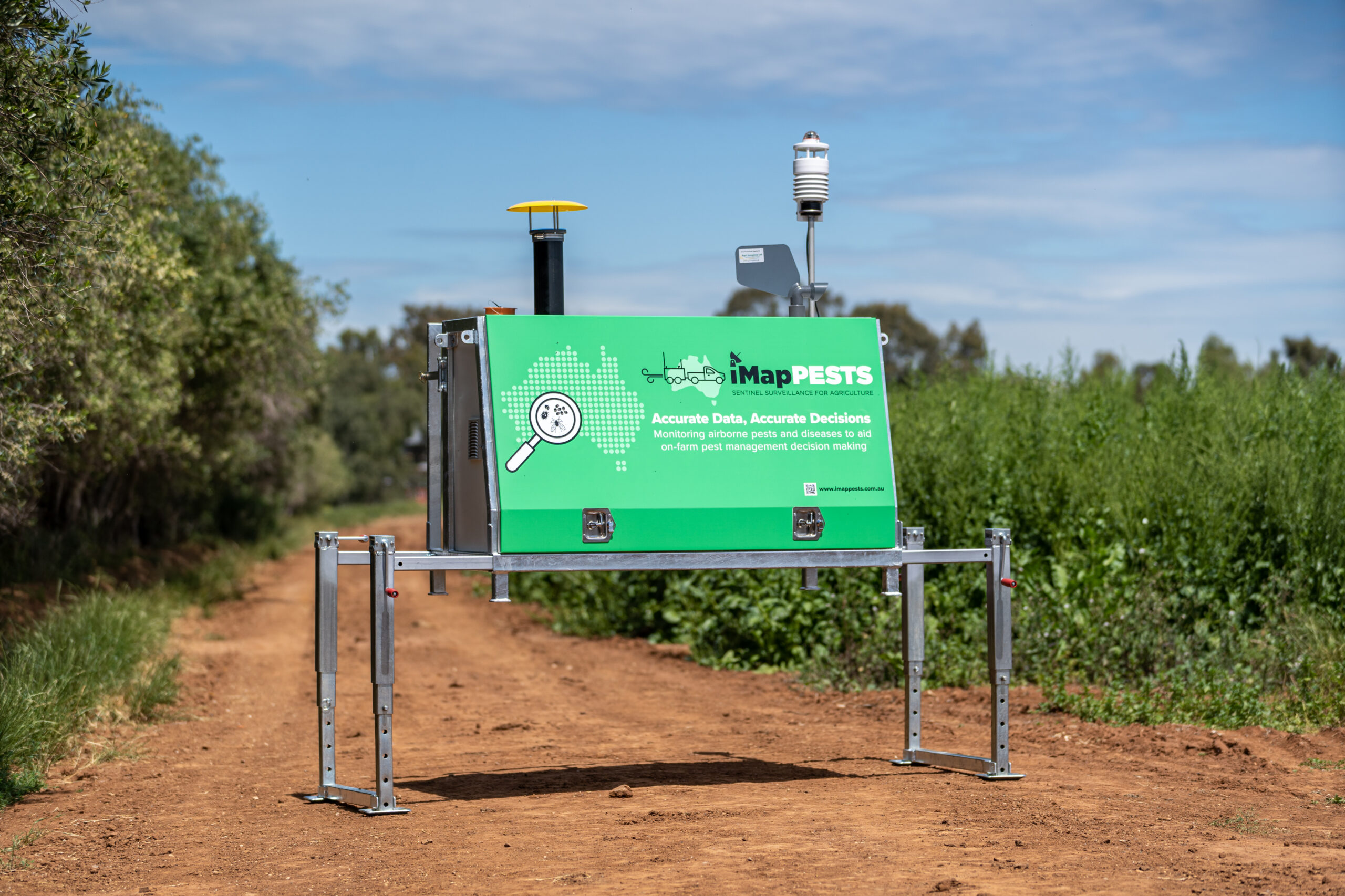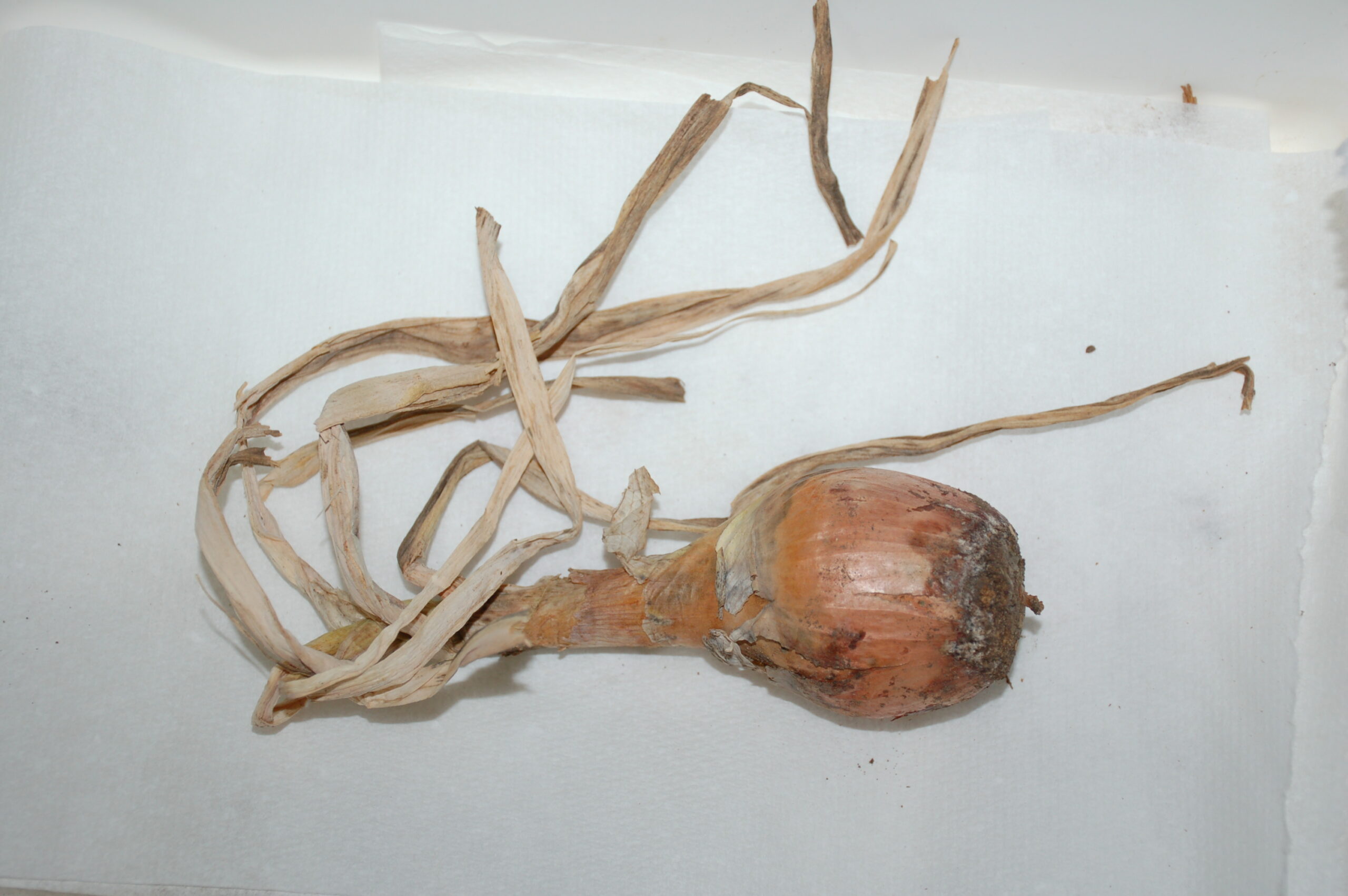
iMapPESTS wraps up after six years of cross-industry collaboration
19 June 2023Vegalogue #1 – Workforce shortages, managing leafy veg contamination and the Spud Sisters
17 August 2023The project, Epidemiology and management of fusarium basal rot in onions (VN20006) is well underway with researchers undertaking field trials and testing to understand the role of fusarium in basal rot and develop management strategies for this major disease for the onion industry in Australia.
The aim of the three year project is to develop an integrated pest and disease management strategy to reduce the impact of fusarium basal rot in onions. Infection can cause seedling losses in the field, but is more problematic late in the crop and during storage.
Fusarium is a soilborne fungus with many species, primarily existing as spores that can remain in the soil for a number of years. To date, the role of Fusarium species and their relationships in the Australian onion industry are not well understood.
Overseas, fusarium basal rot has been a problem for many years including in the USA and Netherlands, and also in shallot onions grown in Asia. It is now becoming more apparent in South Australia, and to a lesser extent in other hot climate production areas of Australia. In cooler climate production areas such as Tasmania, fusarium basal rot is less of a problem.
Project lead, Michael Rettke, of SARDI says that most researchers believe the pathogen to be a specific strain of Fusarium oxysporum, but there have been reports of other Fusarium species/strains causing basal rot of onions. Part of the project initial aims was to determine which Fusarium species is the primary cause of basal rot in Australia.
“We have undertaken a great deal of sampling of onions with basal rot symptoms and used DNA testing of infected tissue, as well as isolation of the pathogens and sequencing to determine which Fusarium species is the cause. Fusarium oxysporum f. sp. cepae has been confirmed as the main species associated with basal rot of onions in Australia. Through the testing capability developed we can now routinely test for and monitor levels of the main species causing fusarium basal rot in Australia,” said Michael.
Infection can occur at any time during growth. The tests and trials conducted show that the basal plate normally becomes infected before the bulb scales. It then may take months for the bulb scales to become affected, bulb rot often revealing itself during storage. The infection of the basal plate at harvest is usually visibly obvious, however the tests that the SARDI researchers have developed can be used to detect the presence of the pathogen.
“The preliminary results also showed that it is slightly more complicated than we anticipated. High levels of another closely related strain of Fusarium oxysporum are sometimes present in the roots and basal plate of onions and may impact crop health and increase likelihood of basal rot caused by Fusarium oxysporum f. sp. cepae occurring. However, this other strain by itself does not usually seem capable of entering the onion bulb beyond the basal plate.”
Impact on disease and productivity by this other strain is being further investigated.
“Our field trials have been conducted in the Murray Mallee and SE of South Australia” Michael said, adding that he prefers to have trials done in the field, to better understand what happens with natural variations in environmental conditions, and crop management in commercial production systems.
“We conduct assessments soon after planting, during the growth phases, and at harvest. We have also put onions in storage for three months to monitor for basal rot occurrence. In addition, we use moisture probes in the soil, conduct nutritional analysis and assess agronomic inputs to see what is going on. This will give us a better understanding of the drivers of the disease, how it progresses and where, and why some paddocks and regions have a greater problem than others.”
Michael suspects that moisture conditions and drainage are part of the reason for the pathogen’s prevalence in certain areas. It is also known that some onion varieties are less susceptible to fusarium basal rot. In some cases, pink root has also been found together with basal rot; this is under further investigation to see if the two diseases are interacting. That said, high levels of fusarium basal rot have been observed in paddocks with low pink root pressure.
The next phase of research
“As we progress through and understand the pathogen better, we have gained greater clarity on what strategies can be used to combat the fungus.
“Beside investigating the effect of irrigation practices, crop rotation and host crops, we will be looking at testing the effectiveness of biological control and chemical treatments. There are no registered chemical products for fusarium basal rot control in onions currently available.”
With grower input and irrigation practices varying considerably, field trials will be used to assess how varying inputs such as irrigation can affect risk and progression of disease. It is also known from other crops that higher N levels encourages fusarium to flourish – there have been reports of both ammonia and nitrate forms of N increasing disease incidence.
Crop rotations will be important as the fungus can survive for around four years in the soil, but host plants are yet to be properly investigated. Research from South Africa has shown that the weed oxalis, is an alternative host.
“Now that we have an understanding of the research that has been done to date overseas, and identified the major cause of the disease here in South Australia, we can conduct field trials, with a focus on crop rotations, and adding the use of biologicals, bio-stimulants and chemicals where we can to develop management strategies that may help the grower.”
This project has been funded by Hort Innovation using the onion research and development levy and funds from the Australian Government.


